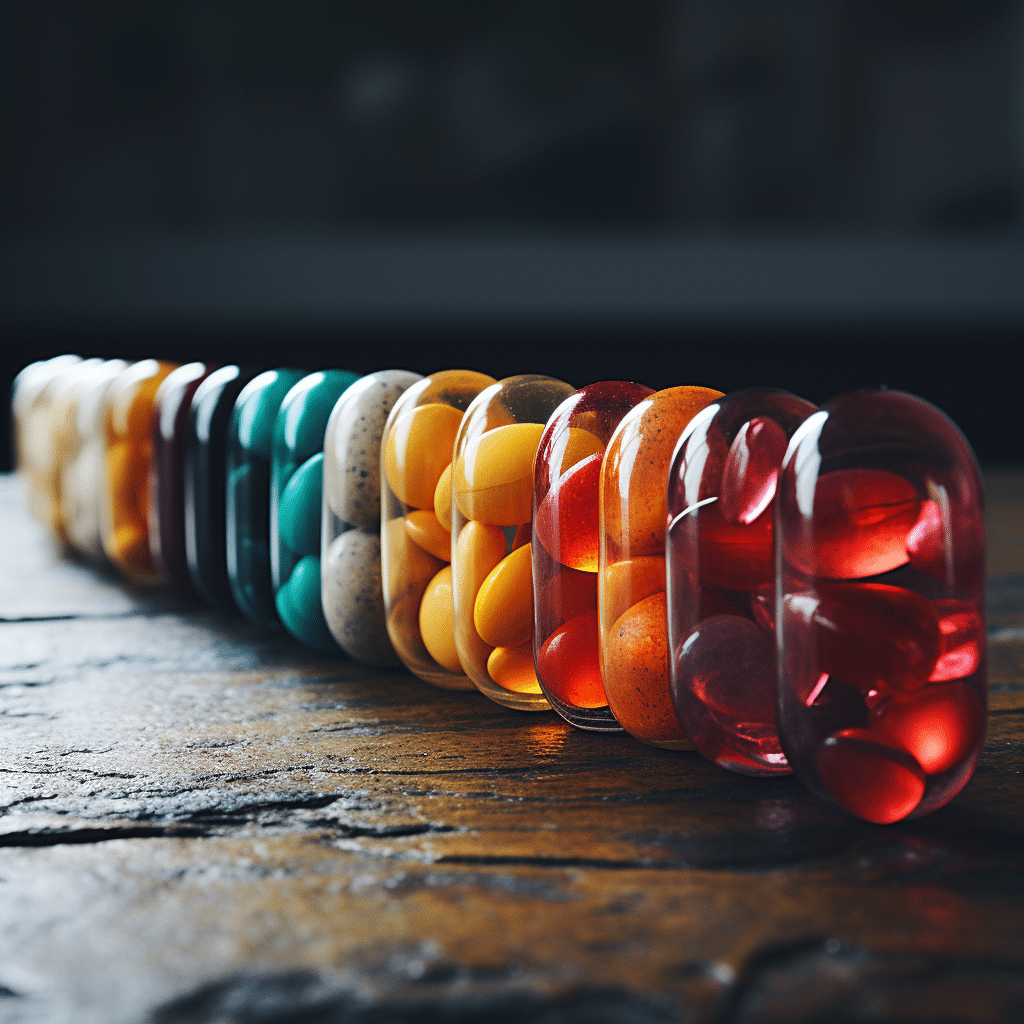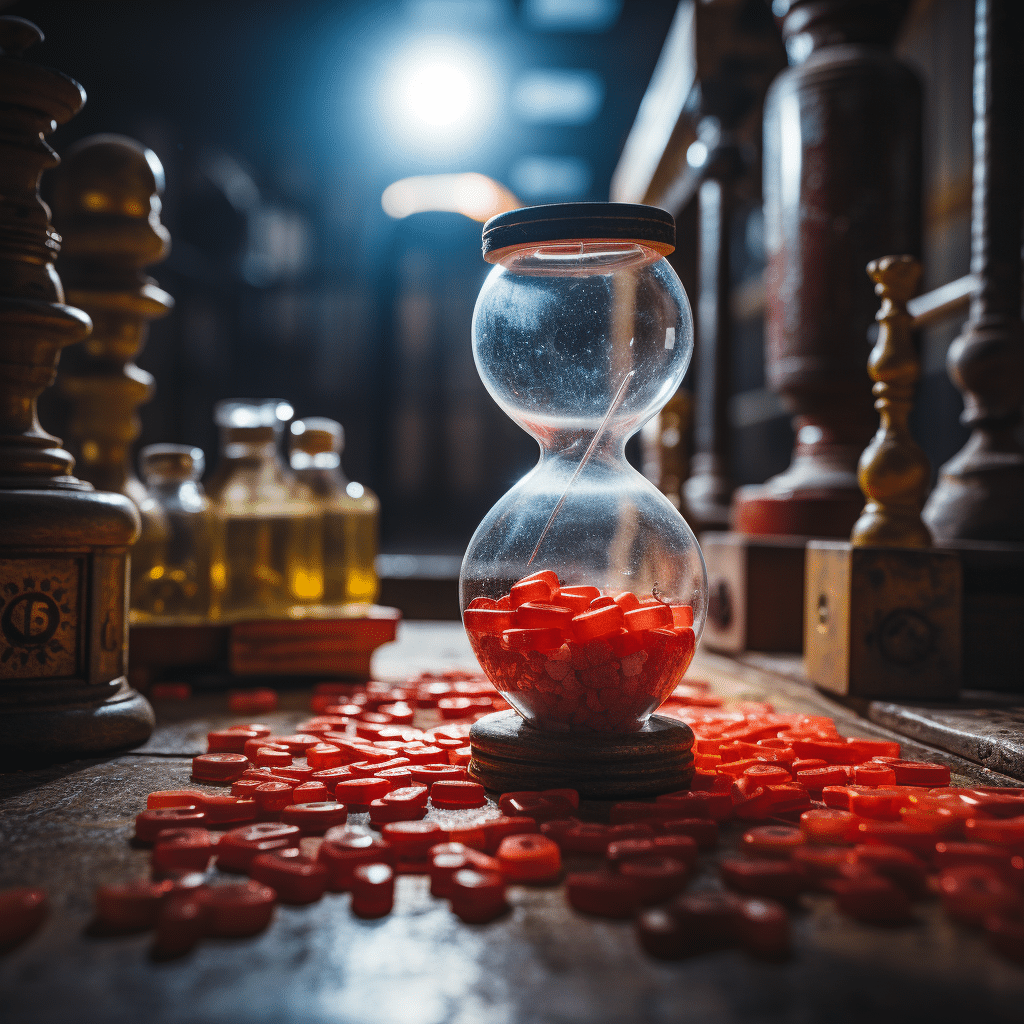Understanding How Long Does Vicodin Stay In Your System
Oh boy, Vicodin. It’s a name that rings all sorts of bells. For some, it’s the relief after a grueling surgery. For others, it’s a slippery slope that may lead to the hard road of addiction. So, what’s the deal with Vicodin? Vicodin combines two potent ingredients: hydrocodone, an opioid painkiller, and acetaminophen, the everyday pain reliever you know as Tylenol. It’s prescribed to manage moderate to severe pain, the kind that makes getting through the day feel like a heroic act.
But, as is the case with many caped crusaders, there’s a dark side. The opioid part of the team, hydrocodone, can be quite habit-forming, making Vicodin a ride you don’t want to be on for too long. That’s where the heartache begins for many families. At Mothers Against Addiction, we hear the stories; we see the struggle. Understanding Vicodin is the first step in supporting those fighting the monster of addiction.
The Metabolism of Vicodin: From Ingestion to Elimination
“Digest and rest” isn’t just for Thanksgiving dinner; it’s what your body’s doing with Vicodin every moment after it hits your system. Once ingested, Vicodin gets to work, distributing its active compounds throughout your body. Let me paint a picture for you: hydrocodone is like a little explorer, setting sail in your bloodstream and making pit stops at various ports, delivering pain relief in spades.
In the liver, the true transformation happens – metabolic processes turn hydrocodone into various metabolites, some of which can pack a punch in terms of pain relief. Eventually, Vicodin says its goodbyes as it exits stage left through your urine. The timeline, though, can be a bit of a diva, hogging the spotlight longer depending on factors like age, metabolism, and liver function.

| Factor | Detail |
| Active Ingredients | Hydrocodone (opioid) and Acetaminophen (non-opioid pain reliever) |
| Half-life of Hydrocodone | Approximately 3.8 hours |
| Half-life of Acetaminophen | 1.25 to 3 hours |
| Urine Detection Times | Up to 72 hours after last dose |
| Blood Detection Times | 6 to 24 hours after last dose |
| Saliva Detection Times | Up to 36 hours after last dose |
| Hair Follicle Detection Times | Up to 90 days after last dose |
| Onset of Action | 30 to 60 minutes |
| Duration of Effects | 4 to 6 hours |
| Tolerance Development | Can occur with prolonged use, leading to higher doses required |
| Potential for Misuse/Addiction | High, due to opioid content |
| Withdrawal Timeline | Begins within 6-12 hours, peaks at 72 hours, lasts up to a week |
How Long Does Vicodin Stay in Your System: Examining the Half-Life
When it comes to medications, everybody’s got a timer – we call it the half-life. Imagine every drug’s got a ticking clock, counting down the minutes until it’s reduced its presence by half. For Vicodin, the half-life can range from 3.8 to 6 hours on average. But here’s the kicker: that’s just for hydrocodone. Acetaminophen bids adieu quicker, with a half-life of about 1.25 to 3 hours.
Picture the hourglass on this one: just because the sand’s run through doesn’t mean the show’s over. Vicodin can play hide and seek in your system, showing up in drug tests long after the effects have worn off. This stick-around attitude is one of the reasons why understanding “how long does Vicodin stay in your system” is key, especially when navigating the murky waters of addiction.
Comparing Lortab and Vicodin: Two Opioids Under the Microscope
Now hold on, before we get all caught up in Vicodin, let’s shine the spotlight on its close cousin, Lortab. It’s like comparing two top sports teams, let’s say Manchester City Vs Manchester United, both are strong players but with their own style of game. Lortab and Vicodin both have hydrocodone and acetaminophen on their roster but may differ in strength and dosage forms. Understanding “how long does Lortab stay in your system” alongside Vicodin is like rooting for both teams – it’s tricky, but you’ll want to know what you’re up against in the world of opioids.

Testing for Vicodin: Detection Windows in Different Bodily Fluids
Okay, folks, strap in for the detective work – testing for Vicodin. Just like Band in a Box can give you the whole ensemble effect, various drug tests can give you the broad picture of opioid use. Blood tests, urine screens – you name it. Did you know hair follicle tests can uncover your Vicodin secret for up to 90 days? Or that saliva tests can wag their finger at you for up to 36 hours after the last dose?
Each bodily fluid has its own calendar, setting up detection windows that could make or break someone’s recovery journey. And while we’re on the subject of time, let’s peek at How long Does Opioids stay in Your system as a whole, because Vicodin isn’t playing this game solo.
Factors That Influence How Long Vicodin Remains in Your System
Now, let’s switch gears and talk about you, the individual. Your body’s as unique as a snowflake, or dare I say, as distinct as Chiara Aurelia in a lineup of stars. Several personal traits dictate “how long does Vicodin stay in your system”:
– Age: Let’s face it, the young’uns often bounce back quicker.
– Metabolism: Some folks burn through a Thanksgiving feast in a blink; others, well, not so much.
– Liver Function: A strong liver works like Zen Mcgrath on the field, but if it’s down and out, Vicodin sticks around like a bad habit.
– Usage Frequency: It’s simple – the more often you rendezvous with Vicodin, the longer it’ll be crashing on your couch.
These factors mix and match like a wild game of Twister, making each person’s experience with Vicodin as personal as their playlist.
Potential Impact on Health: The Risks of Long-Term Vicodin Use
Here’s where the rubber meets the road – the impact of long-term use. Let’s not sugarcoat it, popping Vicodin like candy can have you ending up with more than just a tummy ache. Ever heard of wet brain syndrome? Imagine that, but with opioids. It can mess with your liver, hitch a ride to addiction town, and throw your life off its sweet rhythm.
Health professionals shout it from the rooftops: chronic use is a one-way ticket to struggle city, sans the scenic route. And in the echoes of their warnings, every story of addiction hums a sorrowful tune, a reminder to keep our ears open and support at the ready.
Navigating Vicodin Prescription Safety: Expert Recommendations
Time for the coach’s pep talk, the professional lowdown. Taking Vicodin is a game that needs rules. Stick to the prescribed playbook – no improvising doses here, folks. Your doc’s got the wisdom of Mr. Miyagi and the watchful eye of a hawk; they’re your Yoda in managing prescriptions. Got a suspicion someone’s brewing a dependency? Look for the signs – the constant cravings, the not-so-secret rendezvouses at the medicine cabinet. And let’s put this out there: it’s okay to ask for help. It’s like reaching out to Michael Beasley for a slam dunk in recovery.
Innovative Approaches to Vicodin Dependency and Withdrawal
The final buzzer hasn’t sounded yet. There’s hope on the horizon with cutting-edge treatments tackling Vicodin dependency – think rehabilitation programs that are as innovative as the latest tech gadgets. Therapy’s evolving faster than your latest smartphone update. We’ve got medical treatments sprouting up, offering a fresh start to those hungry for change.
At Mothers Against Addiction, we’re all about lighting that torch, guiding parents, and their kids through the storm of dependency. It’s not just about knowing “how long does Vicodin stay in your system” – it’s about finding that silver lining, and together, we’re a force to be reckoned with.
In wrapping up, the duration Vicodin remains in your system is as complex as the most intricate symphony. Yet, with every note grounded in pharmacology and laced with empathy, this exploration is a lifeline for those paddling the tumultuous waves of addiction. It’s a song of both caution and courage, a harmonious blend of science and support. For every parent out there battling the beast of addiction alongside their children, you’re not alone. Together, we’ll hit the high notes and find our way back to a life of harmony and health.
Understanding How Long Vicodin Stays in Your System
Ever wonder about the staying power of Vicodin, that common prescription folks take for pain relief? Well, if you’re wrapping your mind around just how long does Vicodin stay in your system, you’re in for some intriguing bits of info!
Whoa, did you know that Vicodin can be a bit of a stickler in your system? It’s not quite like your cousin who overstays their welcome at Thanksgiving; however, it does hang around for quite a bit. Typically, Vicodin waves goodbye to your bloodstream within 24 hours, but don’t think it’s fully left the party just yet! Like footprints in the sand, this drug leaves its mark, detectable in urine for up to four days—now isn’t that something? Speaking of urinal attendants, sodium-tablet-counterparts like oxycodone have their own timeline of telltale traces; to sneak a peek at that sage, just swing by the scoop on How long Oxycodone stays in Your urine.
Alright, moving on! If you think urine tests are the be-all and end-all, hold your horses. Would you believe me if I told you hair tests could reveal Vicodin’s presence a whopping 90 days after the last dose? That’s like remembering you left the oven on three months later—quite a stretch, huh? It’s no gossip—it’s straight-up science!
Now, if you’re asking yourself, “Why does this all matter?” here’s the lowdown. It’s not just about satisfying curiosity or winning the next round of trivia night. Understanding how long Vicodin stays in your system is crucial, especially if you’re mindful of medication interactions, job screenings, or planning to toss back a couple of drinks (not advised, by the way). Vicodin has a habit of mixing things up in more ways than one, and not always in the high-spirited, cocktail shaker kind of way.
So there you have it, friends—a smidge of trivia tucked into the seriousness of drug safety. Always remember, when it comes to your well-being, every nugget of knowledge counts like coins in a piggy bank. Stay informed, stay ahead of the game, and hey, don’t forget to share these fun facts at your next social gathering—it’s bound to earn you some ‘wow’ faces!

How long does Vicodin peak last?
Well, hang onto your hat, ’cause the peak effects of Vicodin usually hit their stride within an hour or two and can last for a good 4 to 8 hours. But, like all good things, it doesn’t last forever, so you’ll want to keep an eye on the clock.
Do you build up a tolerance to Vicodin?
Talk about déjà vu! Yep, you absolutely can build up a tolerance to Vicodin. Before you know it, you’ll need more of it to get the same relief—that’s your body saying, “been there, done that,” and it’s not as impressed with the effect anymore.
What is the half life of Vicodin es?
As for the half-life of Vicodin ES, that’s the time it takes for half the drug to wave bye-bye to your system. It clocks in at about 3.8 hours, give or take, but this can vary from person to person.
What is the strongest pain killer?
Oh boy, the strongest painkiller is a bit of a loaded question, but let’s cut to the chase: opioids take the cake, and within that family, fentanyl is the big cheese, way stronger than most. But don’t mess with it unless a doc gives the green light, ’cause it’s heavy-duty stuff.
Is oxycodone stronger than hydrocodone?
On the battle of the painkillers, oxycodone often takes the crown for being stronger than hydrocodone. But hey, it’s not a competition; both pack a punch and should be taken with a grain of salt and a doctor’s note.
Which is best pain killer tablet?
Chasing after the best pain killer tablet? Well, it’s tricky because what’s best is really about what suits your ache and your body. Acetaminophen handles the mild stuff, ibuprofen kicks inflammation to the curb, but for heavy-duty pain, your doc might prescribe something stronger.
How long does it take to build a tolerance to pain medication?
If you’re wondering how long it takes to build up a shield against pain meds, there’s no one-size-fits-all answer. It can be just a few weeks for some unlucky folks before the meds say, “Try harder!” and your doses start creeping up.
Why do I still feel pain after taking painkillers?
And then sometimes you pop a painkiller and—bam—you might still feel pain. It’s like throwing a party and nobody shows up. Why? Could be you’ve hit a tolerance wall, or the dose isn’t quite right, or maybe your body’s just playing it tough. If it keeps up, calling your doc is the smart move.




























